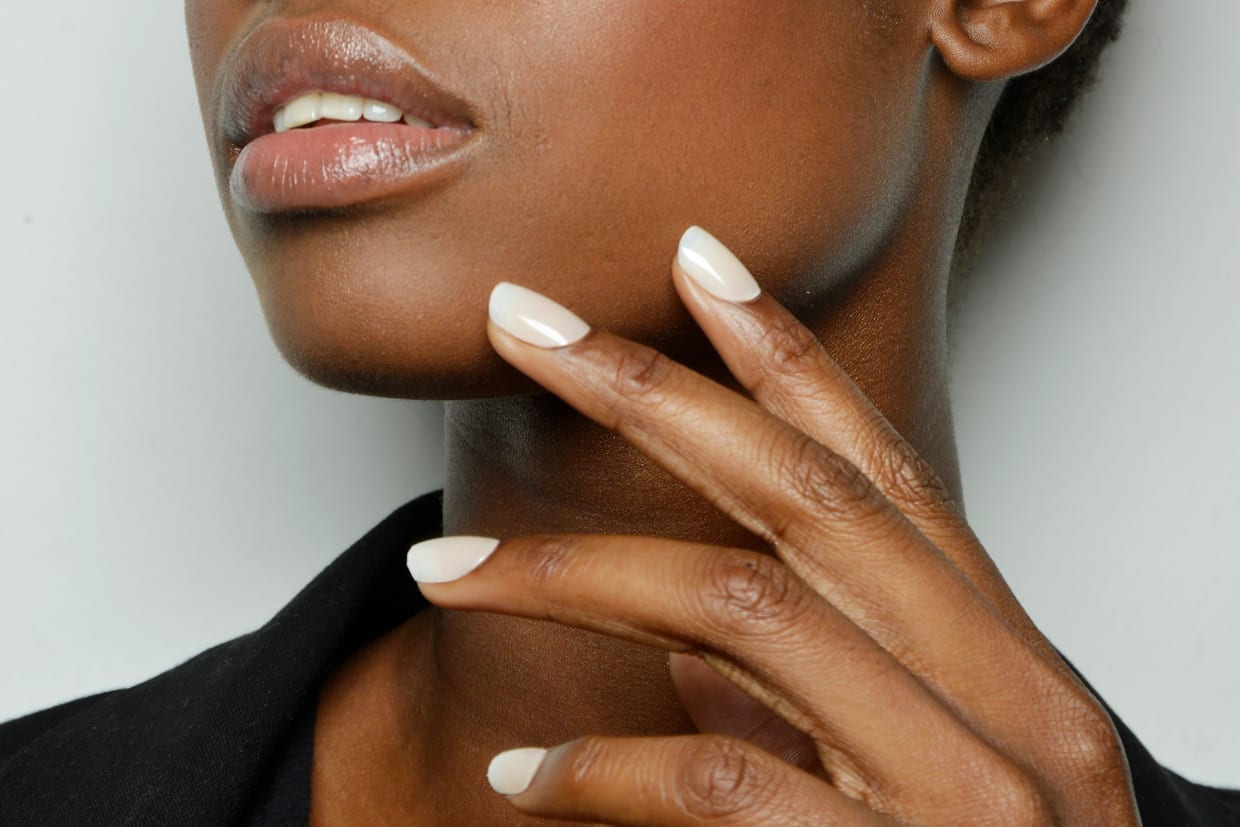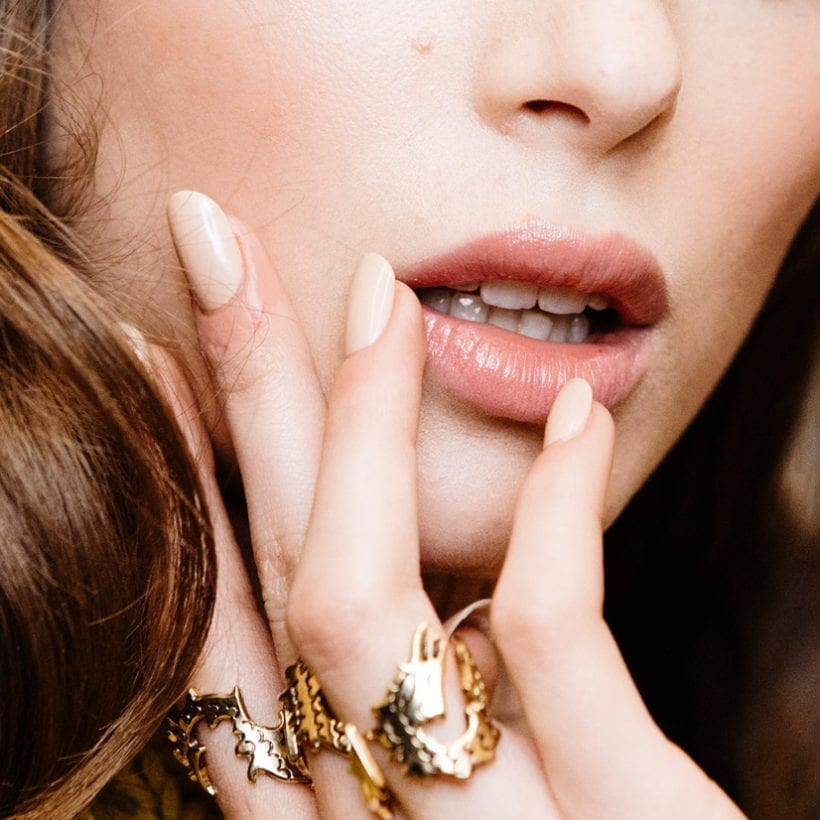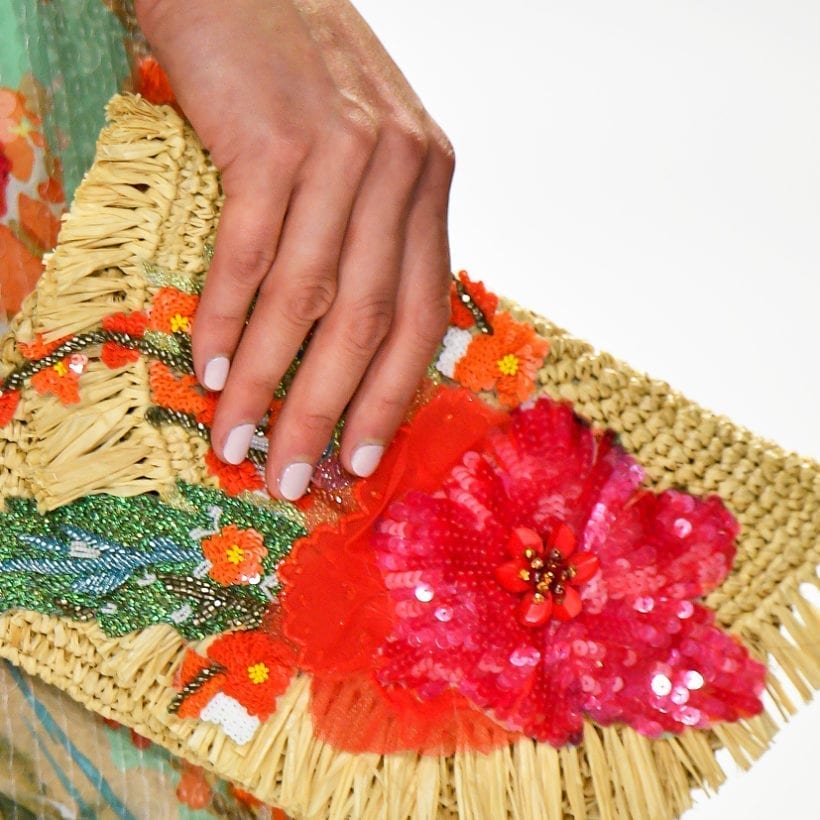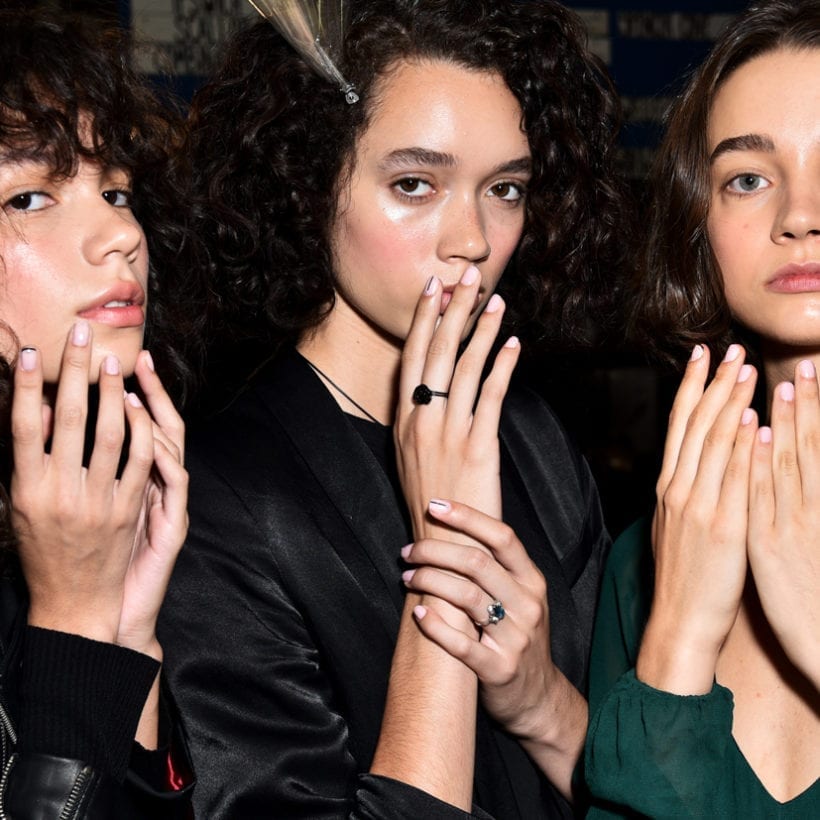A manicure that does not smudge and does not require UV light? Sign us up.
Until the last few years, gel, or shellac, was the holy grail when it came to manicures and pedicures, promising long-lasting, chip-free color and overall healthier nails. But dip nails, like gel, offers an aesthetically pleasing and less damaging alternative to acrylic, but lasts even longer — up to four weeks, as opposed to gel which lasts up to two.
“Dip is a new but old method used since the ’80s that’s making an impressive comeback just like the French manicure did decades ago,” explains celebrity nail artist, Jackie Saulsbery. “It’s a great [method for] clients and manicurist alike in the sense that it takes the same amount of time to create as a gel, but lasts longer.”
But along with the increase in their long-lasting ability, dip nails tend to be more expensive than gel, ranging between $40-$60, depending on the salon. So, what makes them worth it? Experts explain:
What are dip nails?
Unlike gel, dip manicures and pedicures do not utilize UV rays. Instead, they are created using a powder made up of a polymer and resin, or glue, to create a bond on the nail that comes in a variety of colors. “Nails are filed, shaped and cleansed, and then the nail plate is brushed over with a coat of resin,” explains Gina Edwards, manicurist and Global Nail Ambassador for KISS Nails. “One finger at a time is dipped into the color powder and resin is added again before an activator is applied to dry the whole process.” These steps are repeated two or three times, depending on the color and product to achieve the customer’s desired look. “The final step is a glossy finish which dries on its own in seconds — no UV or dryer required,” adds Edwards.
https://www.instagram.com/p/BqXv217nCnV/
Where did dip nails come from?
Surprisingly, acrylic powders have their roots in dentistry and were first utilized in the 1950s. “Different types of manicures were available by then, but dentist Frederick Slack made use of his professional knowledge to solve a broken nail issue of his own using dental acrylics,” says Lina Buk, beauty expert and the founder of Nail Art Gear. “This was not the final step in perfecting acrylic dip powder, of course, but the formulation we know today might be vastly different if not for Slack’s innovation.” It wasn’t until the 1980s, however, where dip acrylic powders were available commercially to be used by individuals in salons.
Who is an ideal candidate for dip nails?
If you love the look and longevity of gel nails but are trying to avoid the damage that acrylic can cause to your natural nail underneath, dip nails are the perfect in-between treatment. Once a few coats of resin are applied, thin nails can actually be camouflaged to look thicker. Getting the process done at your local salon is relatively easy — with the creation and drying time taking less than a gel manicure.
https://www.instagram.com/p/BzqrxHbg7vx/
Are there any downsides to dip nails?
When it comes to design, you actually have fewer options than gel or acrylic since dip is a powder and not a fluid product, notes Edwards. “The most common nail art options are ombre, French, lateral lines and marble,” she says. “The color is also a bit deceiving in the jars and only becomes true to its color once it is mixed with the resin once applied.” You’ll want to take a close look at the sample swatches available at the salon to get a better idea of what the finished product will look like.
Nail experts also agree that dip manicures come with an increased risk for nail infection. “Unlike gels and acrylics, you can risk getting a fungus much easier if the previous client before you has a fungus or mold and you’re using the same dip color as they did,” explains Edwards. To prevent this unsanitary situation, you should take extra precaution when choosing your salon. Do your research and read reviews to be sure your salon follows proper sanitary protocol. Edwards recommends asking your technician or the salon owner whether or not they specifically separate the powders in smaller containers instead of using a single container, as this can help cut down on the chance that an infection could spread.
https://www.instagram.com/p/B1RyM5pFlbk/
What should you know before getting dip nails?
Many nail salons still do not offer dip nail services, but those that do will not allow you to do the dipping yourself. “Every client uses the same jar and hygienically that is not a safe way to apply an artificial nail system that exposes everyone’s skin to the same container,” says Edwards. “Separate and single containers should be used for each client to ensure safety.” Also, for hygienic reasons, the manicurist will brush the powder onto nails to keep the powder from becoming contaminated.
Buk recommends only using dip nail powder products from reputable brands, such as SNS, Kiara Sky and Gelish Dip Systems. Cheaper brands can contain harmful substances such as MMD, an ingredient harmful to the natural nail that is banned in New York and widely considered seriously unhealthy for the body and natural nails. “Due to high levels of acidity exposure, MMA/MMD can lead to respiratory problems, liver and kidney complications if exposed for a long period of time,” says Edwards. “The smell is very distinctive: sour with a pinch of fruitiness — that’s a sure way to tell if a salon is using it.”
And if you already have an existing gel polish on your nails, set aside extra time for your nail technician to remove it. The same goes for any current dip powder you have on your nails, as the removal is similar to that of gel — so if you avoid gel for this reason, this might not be the manicure for you. “Usually, a file is used to work away most of the material and the nails are then soaked in acetone to remove the rest,” says Buk. “Trying to remove your dip powder manicure at home can be damaging if not done correctly, so it’s best to reach out to a professional who’s familiar with the product.”
We only recommend products we have independently researched, tested, and loved. If you purchase a product found through our links, Sunday Edit may earn an affiliate commission.







